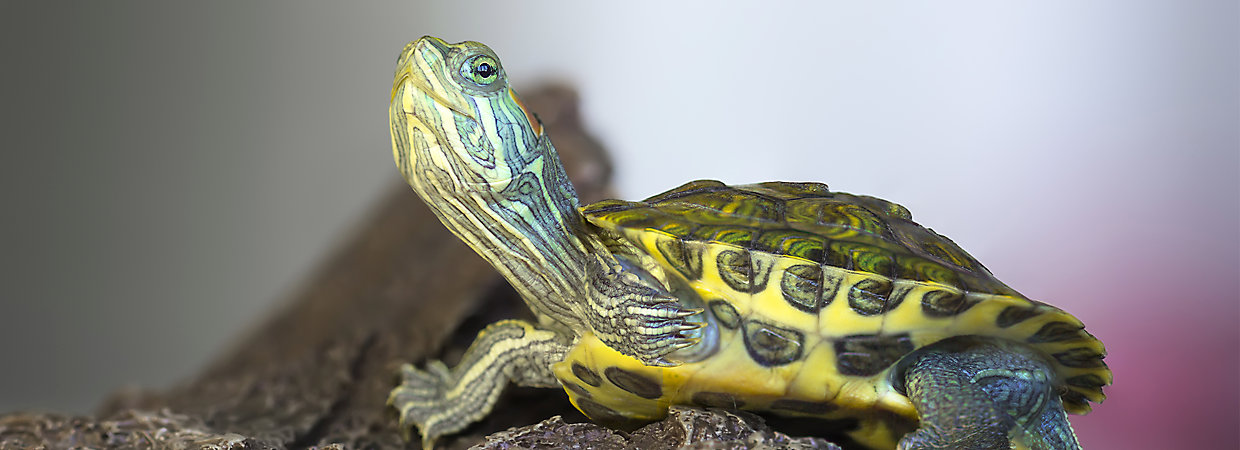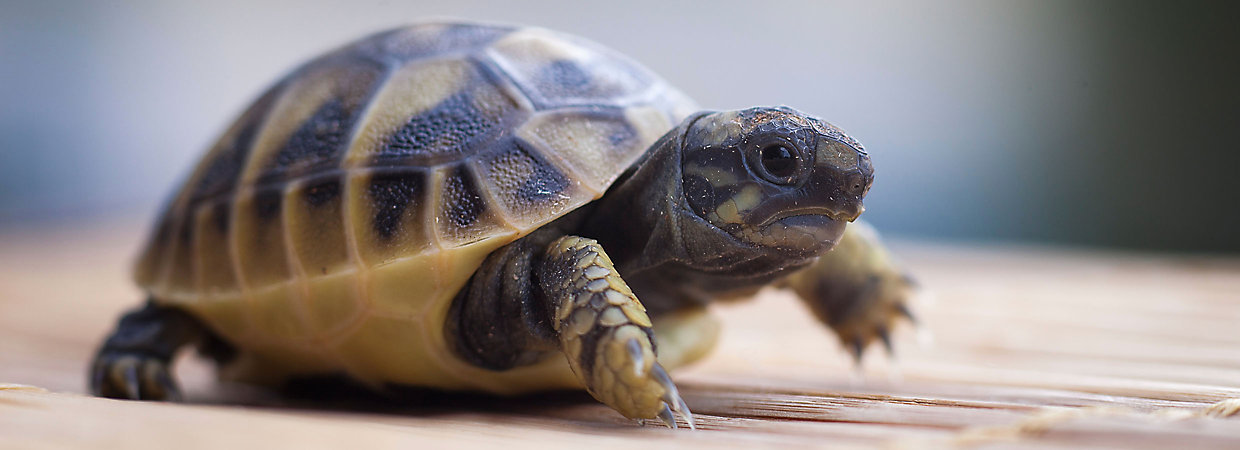To care for pet turtles, provide a suitable habitat with proper lighting, temperature, and water quality. Regularly feed them a balanced diet of commercial turtle food and fresh vegetables.
Additionally, ensure their shell is clean and monitor their health for signs of illness or injury. Creating a safe and comfortable environment for your pet turtle will help them thrive and live a healthy life. Remember to handle them gently and respect their natural behaviors to build a strong bond with your shelled companion.
By following these care guidelines, you can enjoy the companionship of your pet turtle for many years to come.
Choosing The Right Turtle Species
Before bringing a pet turtle home, it’s essential to choose the right species that aligns with your lifestyle and preferences. Consider factors like size, diet, and habitat requirements to ensure the well-being of your new shelled friend.
Consider Your Lifestyle
When selecting a turtle species, evaluate your daily routine and living situation. Ensure you can provide the necessary care and environment for the specific type of turtle you choose.
Research Different Species
- Research various turtle species to find one that suits your expertise level.
- Consider the space you have available for your turtle’s habitat.
- Understand the dietary needs and lifespan of different turtle species.
- Consult with a veterinarian or experienced turtle owner for guidance.

Credit: www.petsmart.com
Setting Up The Habitat
Setting up the habitat for your pet turtle is crucial to ensure their health and well-being. Creating a proper enclosure, ensuring proper temperature and lighting, and providing clean water are essential aspects of turtle care. Let’s delve into each of these factors in detail.
Creating A Proper Enclosure
When setting up the enclosure for your pet turtle, it’s important to consider the size and material of the tank. Turtles require ample space to swim, bask, and explore, so a tank that is at least 10 gallons per inch of shell length is recommended. Opt for a sturdy glass or acrylic tank that provides a secure environment for your turtle. Additionally, the tank should have a secure lid to prevent escapes and protect your turtle from potential hazards.
Ensuring Proper Temperature And Lighting
Maintaining the right temperature and lighting is crucial for your turtle’s overall health. Use a combination of heat and UVB lamps to create a basking area with temperatures ranging between 85-90°F. Position the lamps to provide both heat and UVB exposure for at least 10-12 hours a day. This mimics the natural sunlight that turtles require for proper thermoregulation and shell development.
Providing Clean Water
Clean, filtered water is essential for your turtle’s well-being. Invest in a high-quality water filtration system to keep the aquatic environment pristine. Regularly check the water quality and perform partial water changes to maintain optimal conditions for your turtle. Ensure that the water level allows for swimming and diving, while also providing a dry area or basking platform for your turtle to rest and bask.
Feeding Your Pet Turtle
To care for your pet turtle, ensure its diet includes leafy greens, vegetables, and occasional protein sources like insects or small fish. Provide a balanced diet and offer fresh water for drinking and swimming. Avoid overfeeding and consult a vet for specific dietary recommendations.
Feeding Your Pet Turtle is one of the most important aspects of turtle care. Pet turtles have specific dietary needs that must be met to ensure their health and well-being. In this section, we will discuss the different aspects of Feeding Your Pet Turtle, starting with Understanding Dietary Needs.Understanding Dietary Needs
Turtles are omnivores, which means they eat both meat and vegetables. The exact dietary requirements of your pet turtle will depend on their species, size, and age. Generally, turtles require a diet that is high in protein, fiber, vitamins, and minerals. It is essential to research your turtle’s species to ensure you are meeting their specific dietary needs.Offering A Variety Of Foods
Offering a variety of foods is crucial to ensure your pet turtle is getting all the nutrients they need. A balanced diet for a pet turtle includes vegetables, fruits, and protein sources such as insects, fish, or meat. It is recommended to feed your turtle a variety of foods, rather than relying on one type of food. This ensures that they are getting all the essential nutrients they need to stay healthy. When feeding your turtle, it is important to avoid feeding them too much protein. Overfeeding protein can lead to health problems such as kidney disease, which can be fatal. Additionally, it is crucial to avoid feeding your turtle food that is high in fat and low in nutrients, such as processed foods or fast food. In conclusion, Feeding Your Pet Turtle is an important aspect of turtle care. Understanding their dietary needs and offering a variety of foods is crucial to ensure they are getting all the necessary nutrients they need to stay healthy. By following these tips, you can help ensure your pet turtle lives a long and healthy life.Handling And Interaction
Handling and interaction are important aspects of caring for your pet turtle. Proper handling ensures the safety and well-being of your turtle, while interaction helps build trust and a strong bond between you and your pet.
Respecting Your Turtle’s Space
Turtles are sensitive to being handled and can become stressed if they feel threatened. It’s crucial to respect your turtle’s space and avoid handling them excessively. When interacting with your turtle, allow them to come to you rather than reaching for them. Providing a comfortable and safe environment with hiding spots and basking areas will also help your turtle feel secure.
Ensuring Gentle Handling
When handling your turtle, it’s important to be gentle and patient. Always approach them calmly and avoid sudden movements that can startle them. Support their body evenly and avoid lifting them by their limbs. Handling should be kept to a minimum to reduce stress, ideally only when necessary for cleaning or health checks.
Maintaining Health And Hygiene
When it comes to caring for your pet turtle, maintaining their health and hygiene is crucial. Proper care and regular health check-ups are essential to ensure your turtle stays healthy and happy. Additionally, maintaining a clean habitat will contribute to their overall well-being. Let’s delve into some tips on how to maintain the health and hygiene of your pet turtle.
Regular Health Check-ups
Regular health check-ups are vital to monitor your pet turtle’s well-being. Schedule regular visits to an experienced reptile veterinarian to ensure your turtle’s health is in optimal condition. During these check-ups, the vet will examine your turtle for any signs of illness, provide necessary vaccinations, and offer advice on maintaining their health.
Cleaning The Habitat Regularly
Keeping your turtle’s habitat clean is essential for their health and hygiene. Regular cleaning helps prevent the buildup of harmful bacteria and ensures your turtle has a safe and comfortable living environment. Clean the tank and filter regularly, remove uneaten food, and monitor water quality to maintain a healthy habitat for your pet turtle.
Understanding Behavioral Cues
Learn to interpret behavioral cues to ensure your pet turtle’s well-being. Observing their actions can help you understand their needs and provide proper care. Pay attention to their behaviors for a happy and healthy turtle.
If you’re a proud owner of a pet turtle, you must take note of its behavior. Turtles have their own way of communicating with their owners. It is important to understand their behavior and what they’re trying to convey to you. In this article, we will discuss how to recognize signs of stress and observe normal behavior to ensure your pet turtle is healthy and happy.Recognizing Signs Of Stress
Turtles can become stressed due to several reasons such as changes in their environment, lack of food or water, illness, or a dirty tank. As a responsible pet owner, it is your duty to recognize the signs of stress in your pet turtle. Some common signs of stress in turtles include:- Decreased appetite
- Restlessness
- Aggression
- Inactivity
- Abnormal swimming behavior
Observing Normal Behavior
Observing your pet turtle’s normal behavior is crucial to understand its needs and ensure it’s in good health. Here are some behavioral cues that indicate your turtle is healthy and happy:| Normal Behavior | Description |
|---|---|
| Basking | Turtles need to bask to regulate their body temperature. If your turtle is basking regularly, it’s a good sign. |
| Swimming | Turtles love to swim and play around in the water. If your turtle is active and swimming regularly, it’s a sign of good health. |
| Feeding | If your turtle has a healthy appetite and is eating regularly, it’s a sign of good health. |
| Exploring | Turtles are curious creatures and love to explore their surroundings. If your turtle is active and exploring its surroundings, it’s a sign of good health. |
Addressing Common Health Issues
Shell Problems
Shell problems are a common issue in pet turtles. Injuries or cracks in the shell can occur due to improper handling, poor diet, or unsuitable habitat conditions. It is crucial to monitor your turtle’s shell regularly for any signs of damage. If you notice any cracks or abnormalities, consult a veterinarian experienced in reptile care immediately. Providing a proper diet, maintaining clean water, and providing adequate basking and UVB exposure can help prevent shell problems.
Respiratory Infections
Respiratory infections can be caused by poor water quality, low temperatures, or inadequate basking spots. If your turtle is displaying symptoms such as nasal discharge, wheezing, or labored breathing, it may indicate a respiratory infection. Ensure the water temperature and basking spot are optimal, and the tank is clean. Consult a reptile veterinarian for proper diagnosis and treatment. Additionally, avoid exposing your turtle to drafts and sudden temperature changes to prevent respiratory issues.
:strip_icc()/red-eared-sliders-1238387_final-01-resized-bb642b67d2ff435394f67ac551a1bae5.jpg)
Credit: www.thesprucepets.com
Creating A Stimulating Environment
One of the key aspects of caring for pet turtles is creating a stimulating environment. By providing a habitat that mimics their natural surroundings, you can ensure that your turtles are healthy and happy.
Adding Enrichment Activities
- Introduce various toys and objects for your turtles to explore.
- Provide floating platforms for them to climb on and bask.
- Place live plants in the enclosure for a natural feel.
Creating Basking Spots
- Install a heat lamp over a basking area for warmth.
- Use a UVB lamp to help with calcium absorption.
- Include rocks or logs for them to climb on while basking.

Credit: www.petsmart.com
Conclusion
In caring for pet turtles, remember to provide a suitable habitat and diet. Regular vet check-ups and proper handling are essential. Your turtle’s health and happiness are in your hands. Enjoy the unique bond you share with your shelled companion.
Keep learning and growing together!






Leave a Reply